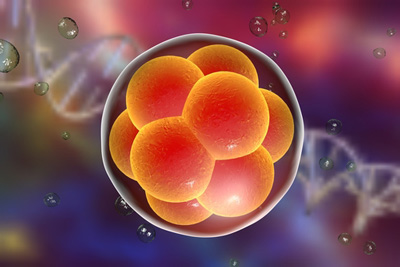Dr. Blythe Sather of Tune Therapeutics reveals why epigenetic editing offers benefits beyond those of gene editing, potentially filling the gaps towards clinical breakthroughs.

When targeted gene editing became a reality more than a decade ago, many people hoped for a revolutionary tsunami of new medical treatments. In the wake of the Human Genome Project, the promise of precision medicine is advancing, but so far the clinic has tested only a smattering of new therapies. The reasons for this are manifold, including concerns about the safety of directly altering DNA sequences and the resulting regulatory restrictions that have arisen as a result. Slow translational adoption makes it clear that scientists need new tactics to activate the latent potential of genetic medicine.
Epigenetic editing is the innovative new approach that the field has long awaited. This pioneering technology regulates gene transcription across the epigenome, directly targeting the root of the dysregulation while leaving the primary DNA sequence intact. Here we explore the As AND Why of epigenetic editing how it works, its advantages over alternative methods, and the exciting clinical potential it holds.
What is Epigenetic Editing?
The epigenome (meaning above the genome) is a system of reversible marks that regulate how DNA is read, translated and used. DNA encodes the basic building blocks of life, and the epigenome controls which building blocks are accessible for active use. The molecular machinery of the epigenetic system can selectively package specific regions of DNA, making them inaccessible and less active. The system can also unwind the DNA to expose it for active use.
Epigenetic editing, also called gene tuning, actively manipulates the epigenetic machinery to affect transcription. The orchestration of natural conductors of gene expression can shift functional states of cells and rebalance gene expression.
This modality is completely distinct from the molecular scissors approach traditionally associated with gene editing. While epigenetic editing and nuclease-based gene editing use similar machinery to direct their effectors to DNA, epigenetic editing is a completely uncut process. Instead of cutting DNA like a nuclease, epigenetic editing alters the epigenomic marks that adorn the DNA, leaving the basic code intact.
This mechanism gives epigenetic editing unprecedented control of gene expression, allowing individuals to fine-tune gene output. This precision has powerful therapeutic implications because shifting a cell’s epigenetic signature changes its transcriptional profile and ultimately its biological activity.
What are the benefits of epigenetic editing?
Epigenetic editing is a bold methodology born from the need to expand the potential of genetic medicine. But what distinguishes it from other techniques? The method is unique because it leaves native DNA intact, has powerful multiplexing capabilities and thus offers tremendous flexibility in gene output. These advantages expand the potential range of therapeutic targets available for precision medicine beyond those of other therapeutic approaches.
Avoid DNA damage
As described, epigenetic editing is a no-cut process. This avoids potentially harmful DNA damage such as chromosomal translocations,1 which are associated with different types of cancer. Also, because epigenetic editing does not directly alter the genetic source code, on the rare occasion that off-target effects do occur, they are usually benign. In other words, epigenetic editing shares the specificity of nuclease-based gene editing while minimizing the risks associated with direct cutting into the genome.
Multiplexing
Another notable benefit of epigenetic editing is the potential for multiplexing, that is, by targeting several genes simultaneously. Many disease states are caused by a network of complex interactions rather than mutations in a single gene. Consequently, the solution to these pathologies requires a multigenic approach. While in theory gene editing can cut several locations at once, in practice, creating multiple double-stranded DNA breaks has the potential to cause genomic instability. Epigenetic editing eliminates this risk while leaving the DNA intact. This gives epigenetic editing the unique ability to treat complex multigenic diseases and opens the door to improved cell and regenerative therapies, which require the manipulation of multiple genes for optimal results.
Nuanced and highly controlled adjustments
Epigenetic editing goes beyond the binary on-off switching state achieved by gene editing and can instead create a dynamic range of expression levels. The field of epigenetic editing includes a growing suite of tools that can deliver precise gene dosages with impressive control. This is especially critical in cases where over- or under-expression of a gene can be toxic, such as in haploinsufficiency syndromes.2
Furthermore, the epigenetic editing toolkit allows for precise temporal regulation. Innate epigenetic memory systems allow for the creation of long-lasting, heritable alterations or brief temporary changes in the transcript. This level of control is unattainable with gene editing and is a severe limitation in applications such as T-cell engineering, where precise epigenetic remodeling during differentiation3 it fundamentally shapes the phenotype and function of the cell.
The epigenetic editing toolbox continues to get more sophisticated with tools that facilitate greater precision. For example, chemical modifications to the guide RNA responsible for directing the epigenetic machinery to the region of interest can fine-tune the intensity and stability of transcriptional changes. Furthermore, scientists are designing different targeting systems such as modified CRISPR-Cas complexes, zinc fingers and transcription activator-like effectors to address epigenetic targets with increased specificity and durability. As we discover more about the molecular players regulating transcription, new options will emerge, allowing for more precise control over the dosage and duration of epigenetic changes.
Epigenetic editing in the clinic
With tightly controlled gene regulation and unparalleled multiplexing capabilities, epigenetic editing has profound clinical potential. So where is epigenetic editing currently located and how will it transition to the clinic?
Epigenetic editing has a strong foundation in the laboratory, and extensive data has demonstrated safety and efficacy in non-clinical studies. For example, researchers have used it to induce transcriptional silencing in the liver of mice,4 resulting in a lasting reduction in cholesterol levels. In induced pluripotent stem cells derived from fragile X syndrome patient, epigenetic editing successfully reversed the hypermethylation,5 effectively restoring a healthy expression. In addition to targeted expression changes, epigenetic editing can also perform high-throughput screening6 to identify functional regulatory elements, which may be critical for effectively engineering immune and stem cells, as well as for programming tissue regeneration. In each of these examples, as in all epigenetic editing, the basic DNA is left completely intact.
The clinic is the natural next step for epigenetic editing. Fortunately, many components of the epigenome editing workflow already exist in the clinical space, making the activation energy required for this transition relatively low. Delivery systems such as viral vectors and lipid nanoparticles and DNA targeting system are already functioning in some clinical capacity. While challenges remain, based on the unique benefits and promising preclinical data, epigenetic editing should be ready to enter the clinic within the next few years.
What will the world be like with epigenetic editing?
Epigenetic editing is a precise and versatile modality with far-reaching clinical potential and the ability to radically reshape our understanding and control of gene regulation. This platform opens the door to the treatment of complex multigenic diseases, effective tissue engineering and fine-tuning of immune cell differentiation.
We are on the verge of a new era in genetic medicine. Epigenetic editing combines the power of multiplexing with the precise control of expression needed to expand the reach of gene therapies, improve cell therapies, and enable genetic medicine. It’s an exciting time in the field of epigenetics! The combined efforts of physicians and researchers, using the power of epigenetic editing, have an invaluable new approach to realizing the promise of genetic medicine for those patients who need it most.
Author biography:
 Dr. Blythe Sather
Dr. Blythe Sather
Dr. Blythe Sather is the Vice President, Chief of Research at Tune Therapeutics. She is an accomplished T-cell biologist with extensive experience working with industry-leading teams to design new therapies. She is currently focused on using genetic engineering to improve and develop cell and gene therapy products for clinical impact.
References
- Brunet E, Jasin M. Induction of chromosomal translocations with CRISPR-Cas9 and other nucleases: Understanding the repair mechanisms that give rise to translocations. Advances in experimental medicine and biology. 2018;:1525.
- Fulcoli FG, Franzese M, Liu X, et al. Rebalancing of gene haploinsufficiency live targeting chromatin. Nature communications. 2016;7(1).
- Akbari B, Ghahri-Saremi N, Soloyeh T, et al. Epigenetic strategies to enhance self T-cell therapy. Molecular therapy. 2021;29(9):264059.
- Thakore PI, Kwon JB, Nelson CE, et al. RNA-guided transcriptional silencing live with S. Aureus CRISPR-Cas9 repressors. Nature communications. 2018;9(1).
- Liu XS, Wu H, Krzisch M, et al. Rescue of fragile X syndrome neurons by modification of DNA methylation of the FMR1 gene. Cell. 2018;172(5).
- Klann TS, Black JB, Chellappan M, et al. CRISPRcas9 epigenome editing enables high-throughput screening for functional regulatory elements in the human genome. natural biotechnology. 2017;35(6):5618.
#Epigenetic #editing #generation #genetic #medicine
Image Source : www.drugtargetreview.com
